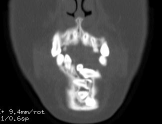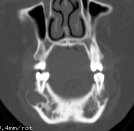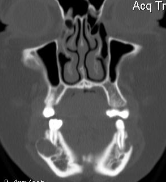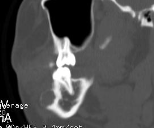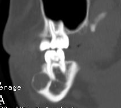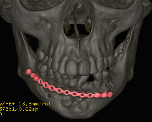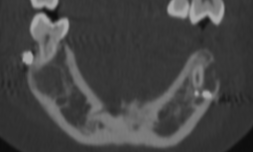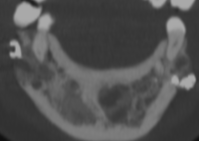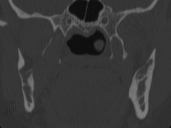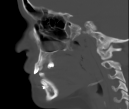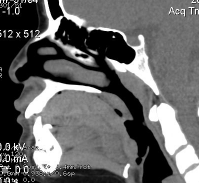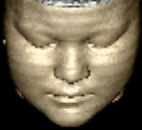
Cherubism is a rare osseous disorder of children and adolescents. Although the radiologic characteristics of cherubism are not pathognomonic, the diagnosis is strongly suggested by bilateral relatively symmetric jaw involvement that is limited to the maxilla and mandible. Imaging typically shows expansile remodeling of the involved bones, thinning of the cortexes, and multilocular radiolucencies with a coarse trabecular pattern.
Cherubism has been described as a subtype of fibrous dysplasia, specifically a hereditary craniofacial fibrous dysplasia, because of the radiographic similarities between the conditions. Recent genetic analysis, however, has shown them to be separate entities. The genetic basis for cherubism was identified in 1999, when the gene responsible for it was mapped to chromosome 4p16.3.
Although the radiologic and histologic characteristics of cherubism are not pathognomonic, the overall morphologic features are characteristic and consistent among cases; these features therefore allow an accurate prospective diagnosis in the appropriate clinical setting.
Citation: American Journal of Roentgenology. 2004;182: 1051-1054. 10.2214/ajr.182.4.1821051https://www.ajronline.org/doi/full/10.2214/ajr.182.4.1821051
